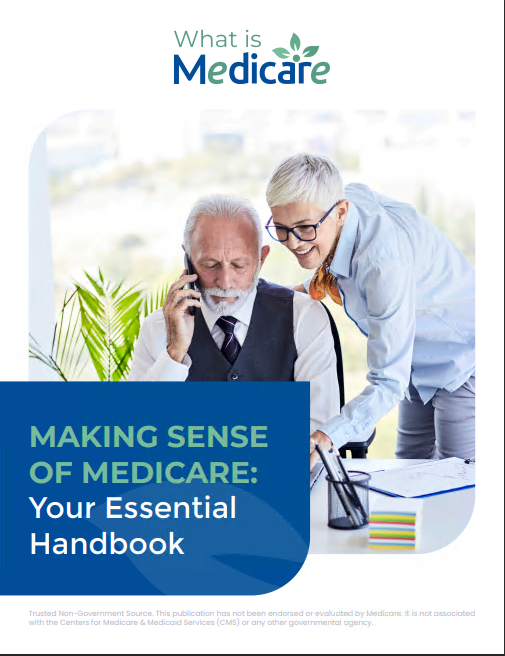Key Takeaways
-
Despite major changes in 2025, Medicare Part D still presents challenges in plan comparison, out-of-pocket tracking, and understanding coverage phases.
-
The removal of the coverage gap and introduction of a $2,000 out-of-pocket cap help, but complex rules and varying formularies keep the program confusing.
What Medicare Part D Covers and Why It Exists
Medicare Part D is the part of Medicare that covers prescription drug costs. It is a voluntary benefit available to anyone enrolled in Medicare Part A and/or Part B. The purpose of Part D is to help you afford the medications you need to manage your health.
Medicare does not automatically include drug coverage. You must enroll in a Part D plan, which is offered through private insurance companies approved by Medicare. Each plan follows federal rules but also sets its own list of covered drugs (known as a formulary), cost-sharing structure, and preferred pharmacies.
What Changed in 2025
Medicare Part D underwent significant updates for 2025 that are meant to reduce your out-of-pocket costs and improve affordability:
-
The coverage gap, commonly known as the “donut hole,” no longer exists.
-
An annual out-of-pocket cap of $2,000 has been introduced. Once your costs reach this amount, your plan pays 100% of covered drug costs for the rest of the year.
-
A new Medicare Prescription Payment Plan allows you to spread your out-of-pocket drug expenses over monthly payments instead of paying all at once.
These changes are meant to simplify your experience. But in practice, understanding how and when they apply is still complicated.
Understanding the Structure of Part D in 2025
Even with the removal of the donut hole, Medicare Part D still operates in multiple coverage phases. This multi-phase structure remains a key source of confusion:
1. Deductible Phase
-
You pay 100% of your drug costs until you reach your plan’s deductible.
-
In 2025, plans can set their deductible up to $590.
2. Initial Coverage Phase
-
After meeting your deductible, you pay a portion (typically a copayment or coinsurance) for covered drugs.
-
Your plan pays the remaining cost.
3. Catastrophic Coverage Phase
-
Once you spend $2,000 out of pocket, you enter the catastrophic phase.
-
From this point on, your Part D plan pays 100% of the cost of your covered prescriptions.
These phases reset each year on January 1, which means you face the same progression annually.
Why Plan Comparisons Are Still Difficult
While out-of-pocket costs are now capped, plan shopping remains a headache. Here’s why:
-
Formularies vary: Each plan covers a different list of drugs. Even if your medication was covered in 2024, it might not be covered in 2025, or it may move to a different pricing tier.
-
Tiers and cost-sharing differ: Plans use tier systems to categorize medications. Tier 1 drugs may have low copayments, while Tier 4 or 5 drugs may carry high coinsurance.
-
Pharmacy networks matter: Costs can differ based on whether you use a preferred, standard, or out-of-network pharmacy.
-
Prior authorizations and restrictions: Some drugs require approvals, step therapy, or quantity limits, adding more complexity.
The Medicare Plan Finder tool is available to help you compare options, but you need to input detailed information about your medications, dosage, and pharmacy preferences to get accurate results.
Drug Coverage Is Not Always Guaranteed
One of the biggest misunderstandings about Medicare Part D is the assumption that it will cover all necessary medications. In reality:
-
Plans are not required to cover every drug.
-
They must cover at least two drugs in each therapeutic class but may exclude brand-name medications if generics are available.
-
Drugs used for weight loss, fertility, or cosmetic purposes are generally excluded.
If your prescription is not on your plan’s formulary, you may be responsible for the full retail cost or you may need to request a coverage determination or exception.
Appeals and Exceptions Add More Complexity
When a drug is denied or restricted, you have the right to file an appeal. But the process can be time-consuming and multi-stepped:
-
First, your doctor can file a prior authorization or exception request.
-
If denied, you can appeal to the plan.
-
Further levels of appeal involve independent reviews, administrative law judges, and federal hearings.
Each step comes with its own deadline and documentation requirement. Many enrollees give up before reaching a final decision.
Monthly Premiums and Extra Help in 2025
You must pay a monthly premium to be enrolled in a Part D plan. These premiums vary based on the plan and your income. In 2025, higher-income individuals may pay an income-related monthly adjustment amount (IRMAA).
If you have limited income and resources, you may qualify for the Extra Help program, which assists with premiums, deductibles, and copayments. While this program helps reduce costs, applying can be difficult, especially for those unfamiliar with income verification or documentation processes.
Coordination With Other Coverage
Many people who are eligible for Medicare also have other forms of coverage. Coordinating Medicare Part D with employer plans, retiree drug coverage, or Medicaid requires close attention.
-
Employer or retiree drug plans must be evaluated for creditable coverage status. If you drop one without enrolling in a Part D plan within the allowed time, you may face late enrollment penalties.
-
Medicaid recipients often receive drug coverage through Medicare Part D but are automatically enrolled in benchmark plans. However, those plans may not always include every needed drug.
If you are juggling multiple coverage types, confirming how each one interacts with Medicare Part D is essential.
Late Enrollment Still Carries Penalties
If you do not sign up for a Part D plan when first eligible and do not have other creditable drug coverage, you may have to pay a late enrollment penalty. This penalty is calculated based on the number of months you were without coverage and gets added to your monthly premium permanently.
In 2025, the rules for late enrollment penalties remain in place, and they apply unless you qualify for a Special Enrollment Period or receive Extra Help. Many people are surprised to discover this penalty later when they eventually sign up.
Medicare Prescription Payment Plan Explained
The new Medicare Prescription Payment Plan, introduced in 2025, offers flexibility by allowing you to pay for your out-of-pocket drug costs in monthly installments.
Key details include:
-
Participation is voluntary and must be requested.
-
Payments are spread over the calendar year.
-
This can prevent you from having to pay large amounts upfront early in the year.
While helpful, the enrollment process is not automatic, and missing deadlines may disqualify you from participation for the rest of the year.
Annual Review Remains Necessary
Medicare Part D plans change every year. Even if you are satisfied with your current coverage, reviewing your Annual Notice of Change (ANOC) during the Open Enrollment Period (October 15 to December 7) is essential.
Changes that may affect you include:
-
Drug formulary updates
-
Premium increases
-
Changes in cost-sharing or pharmacy networks
Failing to act during the enrollment window could leave you stuck with higher costs or restricted access for an entire calendar year.
Why Medicare Part D Remains a Challenge in 2025
Even though 2025 brings real improvements, the structure of Medicare Part D still demands close monitoring, annual comparisons, and plan literacy. You need to:
-
Understand the tier structure
-
Track your expenses through the phases
-
Monitor your medications on the plan’s formulary
-
Watch for restrictions like step therapy
-
Evaluate whether the new payment plan suits your budget
For many, especially those managing multiple prescriptions or chronic conditions, staying on top of all this remains burdensome.
Make Sure You’re Covered and Not Overpaying
Medicare Part D in 2025 still requires informed decisions. Take the time to:
-
Review your drug list
-
Check your plan’s formulary and tiers
-
Evaluate the total out-of-pocket costs
-
Consider whether the new payment plan might help you manage expenses
If you’re unsure how to proceed or want personalized help comparing options, speak with a licensed agent listed on this website. They can help you make a confident choice about your Medicare drug coverage.










